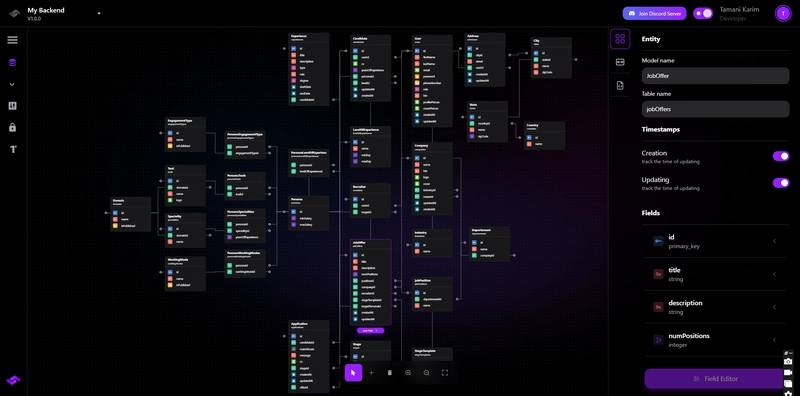Efficient Percentile Ranking in PostgreSQL
When analyzing data, percentiles help us understand the relative ranking of records within a dataset. In PostgreSQL, we can compute percentiles efficiently using the PERCENT_RANK() OVER window function. Understanding Percentiles The PERCENT_RANK() function calculates the relative rank of a row within a partitioned dataset. The formula used internally is: This results in values ranging from 0.0 (for the lowest-ranked row) to 1.0 (for the highest-ranked row), providing a useful measure of distribution. Example Data Structure Let's assume we have a simple posts table: CREATE TABLE posts ( id SERIAL PRIMARY KEY, title TEXT NOT NULL, body TEXT NOT NULL ); And for each post we can have multiple comments: CREATE TABLE comments ( id SERIAL PRIMARY KEY, post_id INT NOT NULL, comment_text TEXT NOT NULL ); And we have visits table, where we keep track of each post visits: CREATE TABLE visits ( id SERIAL PRIMARY KEY, post_id INT NOT NULL, visit_time TIMESTAMP DEFAULT now() ); The goal is to find out each post performance based on the number of visits/comments compared to all other posts. Querying Percentiles For that we can calculate two separate percentiles for each post: Based on the number of comments Based on the number of visits Visits Percentile First, we need to calculate number of visits for each post: SELECT post_id, COUNT(*) AS visit_count FROM visits GROUP BY post_id Then we join it with the posts: SELECT p.id, p.title, COALESCE(vc.visit_count, 0) AS visit_count, PERCENT_RANK() OVER (ORDER BY COALESCE(vc.visit_count, 0)) AS visit_percentile FROM posts p LEFT JOIN ( SELECT post_id, COUNT(*) AS visit_count FROM visits GROUP BY post_id ) vc ON p.id = vc.post_id A few things to note here: We use LEFT JOIN because some posts might not have visits yet, but we want them to be present in our performance report. For the same reason we use COALESCE(vc.visit_count, 0) instead of vc.visit_count - we want zeros instead of NULL there. The line which calculates the percentile: PERCENT_RANK() OVER (ORDER BY COALESCE(vc.visit_count, 0)) AS visit_percentile Comments Percentile To calculate percentile based on the number of comments follows the same pattern: calculate number of comments for each post, join them with posts, and use window function PERCENT_RANK() to get the percentiles. SELECT post_id, COUNT(*) AS comment_count FROM comments GROUP BY post_id We'll omit the intermediate query and show the final version which returns posts with both percentiles: SELECT p.id, p.title, COALESCE(vc.visit_count, 0) AS visit_count, COALESCE(cc.comment_count, 0) AS comment_count, PERCENT_RANK() OVER (ORDER BY COALESCE(vc.visit_count, 0)) AS visit_percentile, PERCENT_RANK() OVER (ORDER BY COALESCE(cc.comment_count, 0)) AS comment_percentile, FROM posts p LEFT JOIN ( SELECT post_id, COUNT(*) AS visit_count FROM visits GROUP BY post_id ) vc ON p.id = vc.post_id LEFT JOIN ( SELECT post_id, COUNT(*) AS comment_count FROM comments GROUP BY post_id ) cc ON p.id = cc.post_id Conclusion By leveraging PERCENT_RANK(), we can easily determine how each post ranks relative to others based on different metrics. This approach is highly efficient and useful for analytics in PostgreSQL.

When analyzing data, percentiles help us understand the relative ranking of records within a dataset. In PostgreSQL, we can compute percentiles efficiently using the PERCENT_RANK() OVER window function.
Understanding Percentiles
The PERCENT_RANK() function calculates the relative rank of a row within a partitioned dataset. The formula used internally is:
This results in values ranging from 0.0 (for the lowest-ranked row) to 1.0 (for the highest-ranked row), providing a useful measure of distribution.
Example Data Structure
Let's assume we have a simple posts table:
CREATE TABLE posts (
id SERIAL PRIMARY KEY,
title TEXT NOT NULL,
body TEXT NOT NULL
);
And for each post we can have multiple comments:
CREATE TABLE comments (
id SERIAL PRIMARY KEY,
post_id INT NOT NULL,
comment_text TEXT NOT NULL
);
And we have visits table, where we keep track of each post visits:
CREATE TABLE visits (
id SERIAL PRIMARY KEY,
post_id INT NOT NULL,
visit_time TIMESTAMP DEFAULT now()
);
The goal is to find out each post performance based on the number of visits/comments compared to all other posts.
Querying Percentiles
For that we can calculate two separate percentiles for each post:
- Based on the number of comments
- Based on the number of visits
Visits Percentile
First, we need to calculate number of visits for each post:
SELECT post_id, COUNT(*) AS visit_count
FROM visits
GROUP BY post_id
Then we join it with the posts:
SELECT
p.id,
p.title,
COALESCE(vc.visit_count, 0) AS visit_count,
PERCENT_RANK() OVER (ORDER BY COALESCE(vc.visit_count, 0)) AS visit_percentile
FROM posts p
LEFT JOIN (
SELECT post_id, COUNT(*) AS visit_count
FROM visits
GROUP BY post_id
) vc ON p.id = vc.post_id
A few things to note here:
- We use
LEFT JOINbecause some posts might not have visits yet, but we want them to be present in our performance report. - For the same reason we use
COALESCE(vc.visit_count, 0)instead ofvc.visit_count- we want zeros instead ofNULLthere.
The line which calculates the percentile:
PERCENT_RANK() OVER (ORDER BY COALESCE(vc.visit_count, 0)) AS visit_percentile
Comments Percentile
To calculate percentile based on the number of comments follows the same pattern: calculate number of comments for each post, join them with posts, and use window function PERCENT_RANK() to get the percentiles.
SELECT post_id, COUNT(*) AS comment_count
FROM comments
GROUP BY post_id
We'll omit the intermediate query and show the final version which returns posts with both percentiles:
SELECT
p.id,
p.title,
COALESCE(vc.visit_count, 0) AS visit_count,
COALESCE(cc.comment_count, 0) AS comment_count,
PERCENT_RANK() OVER (ORDER BY COALESCE(vc.visit_count, 0)) AS visit_percentile,
PERCENT_RANK() OVER (ORDER BY COALESCE(cc.comment_count, 0)) AS comment_percentile,
FROM posts p
LEFT JOIN (
SELECT post_id, COUNT(*) AS visit_count
FROM visits
GROUP BY post_id
) vc ON p.id = vc.post_id
LEFT JOIN (
SELECT post_id, COUNT(*) AS comment_count
FROM comments
GROUP BY post_id
) cc ON p.id = cc.post_id
Conclusion
By leveraging PERCENT_RANK(), we can easily determine how each post ranks relative to others based on different metrics. This approach is highly efficient and useful for analytics in PostgreSQL.












































































































































































![[The AI Show Episode 142]: ChatGPT’s New Image Generator, Studio Ghibli Craze and Backlash, Gemini 2.5, OpenAI Academy, 4o Updates, Vibe Marketing & xAI Acquires X](https://www.marketingaiinstitute.com/hubfs/ep%20142%20cover.png)


























































































































![[FREE EBOOKS] The Kubernetes Bible, The Ultimate Linux Shell Scripting Guide & Four More Best Selling Titles](https://www.javacodegeeks.com/wp-content/uploads/2012/12/jcg-logo.jpg)



![From drop-out to software architect with Jason Lengstorf [Podcast #167]](https://cdn.hashnode.com/res/hashnode/image/upload/v1743796461357/f3d19cd7-e6f5-4d7c-8bfc-eb974bc8da68.png?#)







































































































.png?#)





.jpg?#)






























_Christophe_Coat_Alamy.jpg?#)







































































































![Rapidus in Talks With Apple as It Accelerates Toward 2nm Chip Production [Report]](https://www.iclarified.com/images/news/96937/96937/96937-640.jpg)









































































































































